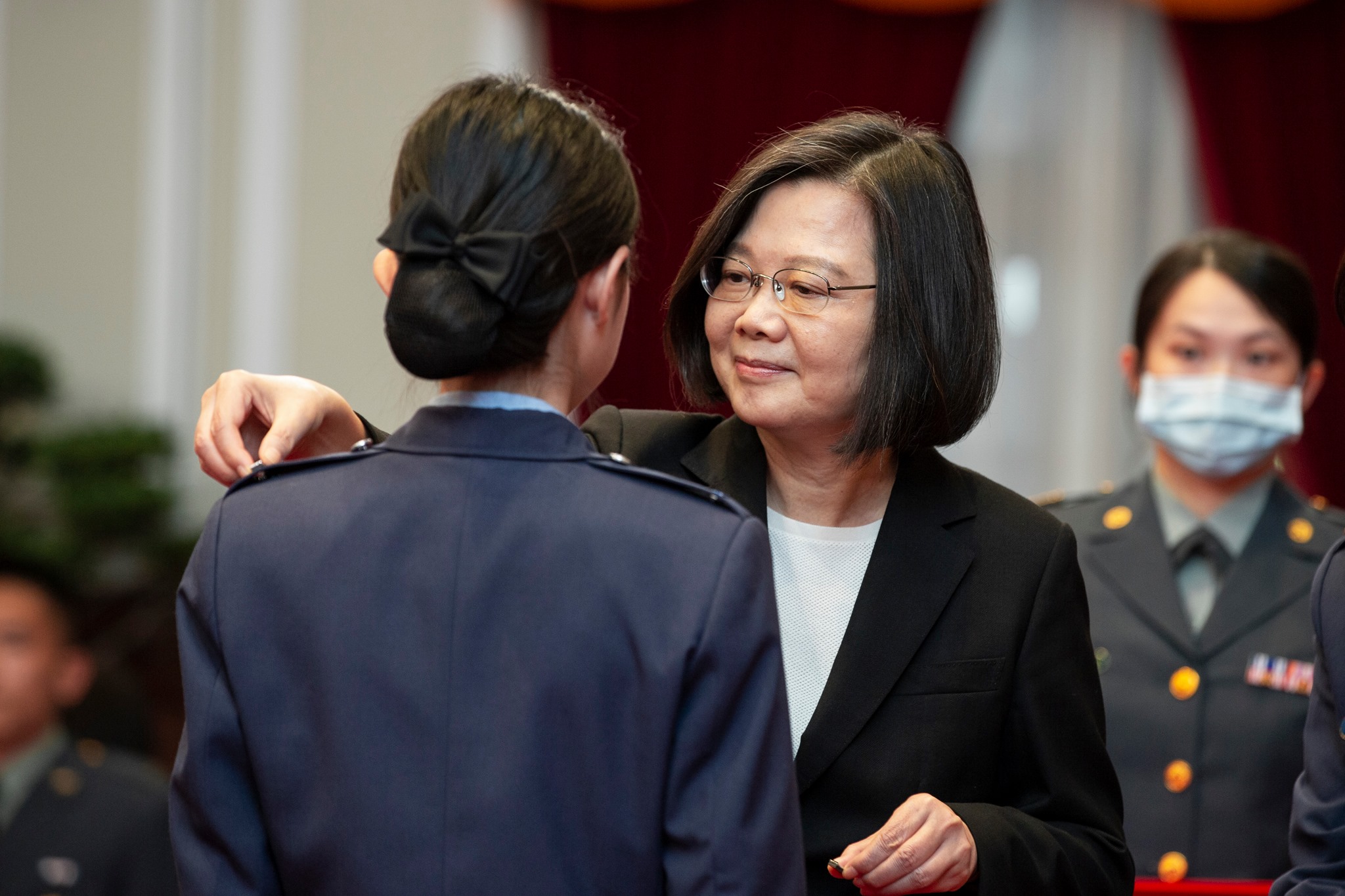Both Taiwan and the ROC today overlap in the fundamental values and ideas that define society. Rather than bicker over nomenclatural differences and symbols, the two main political camps should emphasize what they have in common. Doing so might in fact be a matter of survival.
Once again this year the Double Ten celebrations on Tuesday sparked off a new round of debate in Taiwan about the significance of National Day (or “National Day”). Many of the entries and exchanges on Facebook, in newspaper columns and on evening talk shows served to exacerbate divisiveness rather than bring people together, as most national day celebrations normally do.
As always, one camp needed to remind us all that Double Ten isn’t Taiwan’s birthday (it isn’t), while the more adamant among them — often those from afar — felt compelled to refer to whomever attended the celebrations as either stupid/brainwashed (they are not) or sellouts (ditto).
Indeed, Double Ten marks the anniversary of the Republic of China (ROC), which after the end of the Chinese Civil War imposed itself on a people that, colonized for the previous half-century by the Japanese, expected (quite wrongly, as it initially turned out) that their lives would improve. And yes, there undoubtedly are parts of the Double Ten ceremonies (the national anthem comes to mind) that for many bring back painful memories of the party-state and the manifold vicious acts the regime visited upon the population of Taiwan. As I stood in the large tent erected on the left-hand side of the Presidential Office’s main entrance watching the events, I witnessed a good number of people in attendance who refused to bow to Sun Yat-sen, the founder of the ROC, or skip a few of the more problematic lines in the said anthem. All of them, however, were there to celebrate an idea, even if, for a few, some elements during the event were a bit hard to digest.
On the other side, meanwhile, people complained about the absence of the Nationalist flag in the official invitations and the emphasis on Taiwan rather than the ROC in the visuals and themes (“Better Taiwan” figured prominently on the event’s paraphernalia, which also avoided the traditional blue and red in favor of trendy pastels). Others pointed to the flyby by a handful of Cobra and Apache attack helicopters as dangerous militarism that sent the wrong signals to China (obviously those critics did not look at the arsenal that has been on display at recent National Day ceremonies in Beijing).
I saw no contradiction whatsoever on Double Ten in the Nationalist flag flying next to large signs displaying the “Better Taiwan” logo.
After years of democratization and decades of indigenization of the ROC, all this talk about the Other, about the supposed irreconcilability of the two sides, boils down to the narcissism of small differences and opportunism by political forces, or by people who, for one reason or another, cannot or refuse to acknowledge that the ROC of old, and the Kuomintang (KMT) that strode it for decades, are not the entities of old. The fact of the matter is, and notwithstanding the nomenclatural issues that arise for many within the green camp, today’s ROC — how it is lived and experienced on a daily basis — is a transitory, albeit official, byword for what everybody knows is Taiwan. Thus, I saw no contradiction whatsoever on Double Ten in the Nationalist flag flying next to large signs displaying the “Better Taiwan” logo (the twin t’s in “Better” marked as 十十, or “ten ten”). It was a mix of everything, a melting pot, just like the experiment that is Taiwan.
What has struck me over the years through my interactions with people from all walks of life and political affiliations, from rice farmers in Miaoli to top-ranking government officials in Taipei, isn’t so much the differences that divide them as the things that they have in common. Even those who continue to identify with the ROC and its symbols do so now in the context of a liberal, pluralistic and democratized modern state governed by institutions that have also transformed over time. Whether one calls for a Republic of Taiwan or the continuation of the ROC (in its geographically reduced form), both sides indubitably agree on the fundamentals: they do not want to be part of the People’s Republic of China (PRC), and a liberal-democratic system has become their way of life. Only outliers in the New Party and the China Unification Promotion Party, along with some dinosaurs within the KMT whose only contribution in recent years has been to torpedo, whenever they opened their mouths, the chances of younger KMT candidates from being elected, would disagree with the contention that an alternative political system, or union with authoritarian China, is a desirable outcome for Taiwan/ROC.

DPP supporters cheer on Jan. 15, 2016, as Tsai Ing-wen aims for the presidency (Photo: J. Michael Cole)
The case could be made — and I have made it — that Beijing in fact faces not one but two movements for independence across the Taiwan Strait: the Taiwan Independence camp (taidu) and the Zhonghua Independence movement (huadu). Despite their disagreements on national symbols and official name, in the contemporary context the two movements for independence are nevertheless basically one and the same, both in the values that underpin their identity and what they are opposed to (i.e., unification with the PRC). Thus, despite its stronger identification with ROC symbols and nomenclature, it is unfair to describe today’s mainstream (read: electable) KMT as pro-unification; when one recent chairperson flirted with the idea of uncomfortably closer ties with China she was quickly cast out and will be no more than a footnote in the party’s history.
That isn’t to say that a number of KMT politicians have not, rather unhelpfully, played the China card in a bid to gain an electoral advantage against their opponents from the Democratic Progressive Party (DPP) or the New Power Party. But more often than not this was political expediency rather than the expression of an actual commitment to PRC ideology or unification. Time and again the KMT has sought to position itself as the “responsible” party that is better equipped to negotiate with China and to interact, in the flesh, with Chinese Communist Party (CCP) officials — a view that the CCP itself, seeking to compound divisions in Taiwan, has been more than happy to broadcast. But here, too, this was the KMT doing what it thought it needed to do to best its opponent. As we saw in spring of 2014, when it overplayed its hand and was seen to be getting too close to the CCP (arguably for lack of strategy rather than by design), the KMT was quickly and in no uncertain terms met with retribution from Taiwanese society, both on the streets of Taipei and, later, in a pair of key elections.

Supporters of Hung Hsiu-chu protest outside KMT headquarters on Oct. 7, 2015, as the party prepares to remove her as the KMT candidate in the 2016 presidential election. Many participants in the protest told the author that the eleventh-hour move was “undemocratic” and that in their view Hung was the best person to defend the ROC against China (Photo: J. Michael Cole)
While differences exist on a number of issues, both blues and greens agree on the fundamentals, on the ideology — which goes well beyond a chosen form of governance — that defines Taiwan (or the ROC) and that differentiates it from the increasingly authoritarian PRC. Thus, while crass attacks on one’s political opponents are an unavoidable, if lamentable, by-product of electoral politics, we need to separate those tactical punches from attacks (often made by politicians seeking attention with an eye to securing a position or their party’s nomination in an upcoming election) that, for short-term political gain, risk harming Taiwan at the strategic level: its institutions and the way of life that mainstream blues and greens alike have come to cherish. The actions of politicians who break that basic rule (and those happen far too often) should no longer be countenanced.
Rather than bicker over a flag or nomenclature, matters which like institutional reform can in due course be addressed by a process of evolution, Taiwanese from both sides of the aisle must find it within themselves to recognize and emphasize their shared interests. One can be a radical supporter of Taiwanese independence or conversely a proud waishengren citizen of the ROC and still both would agree on the values, mores, ideas and means of governance that define this place. If only they would sit down together and listen to each other rather than talk past each other or treat the Other as a perennial enemy. Much of those differences are artificial, kept alive and exploited by politicians and media outlets that thrive on division. Democratic systems by design create political camps that act in opposition to each other, rallying voters behind them. Such are the politics of contention. However, given the immense challenges it faces, Taiwan cannot afford to create divisions where they no longer exist, or to widen those that do exist to the extent that they begin to erode the very foundations of the state. At this juncture, reconciliation might very well be a matter of survival.
Top photo courtesy of the Tsai Ing-wen official Facebook page.
You might also like
More from Cross-Strait
Beijing Was Cooking the Frog in Hong Kong Well Before the National Security Law
Well before the coming into force of the NSL on July 1, the special administrative region had already become a …
President Tsai’s Second Term and Cross-Strait Relations: What to Watch Out For
The next four years will be marked by uncertainty over China’s trajectory and the state of the world in the …
As Coronavirus Crisis Intensifies, Beijing Continues to Play Politics Over Taiwan
With a major epidemic on its hands, the Chinese government has not ceased its political warfare activities against Taiwan. It …









